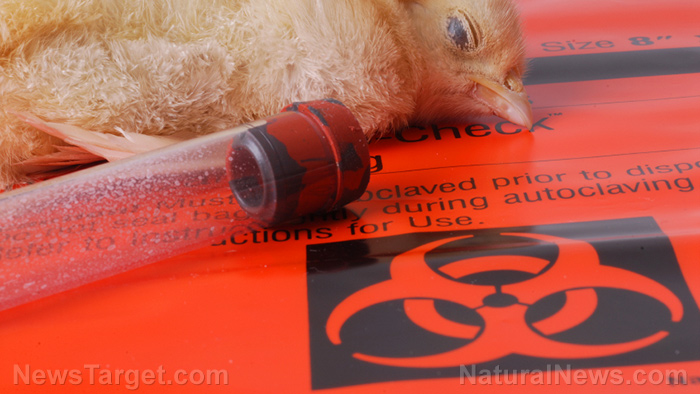
The European Food Safety Authority (EFSA) made this warning public on April 3, highlighting observations of zoonotic transmission between birds and mammals. Such transmissions have been observed in fur animal farms where outbreaks have been reported. While it's rare for infected birds to transmit the virus to humans, EFSA cautioned that new strains could pose a risk in the future.
These viruses are continually evolving globally and with the migration of wild birds, new strains carrying potential mutations for mammalian adaptation could emerge. If avian A (H5N1) influenza viruses were to acquire the ability to spread efficiently among humans, it could lead to large-scale transmission due to the lack of immune defenses against H5 viruses in humans. (Related: H5N1 avian strain expected to be next viral pandemic.)
To prevent the risk of a bird flu pandemic, the EFSA recommended several key actions. These include enhancing surveillance targeting both humans and animals, ensuring access to rapid diagnostics, fostering collaboration between the animal and human sectors and implementing preventive measures, such as vaccination.
Effective communication with different stakeholders is emphasized, along with strengthening veterinary infrastructure, enforcing biosecurity measures at farms and minimizing wildlife contact with domestic animals.
Human knowledge is under attack! Governments and powerful corporations are using censorship to wipe out humanity's knowledge base about nutrition, herbs, self-reliance, natural immunity, food production, preparedness and much more. We are preserving human knowledge using AI technology while building the infrastructure of human freedom. Speak freely without censorship at the new decentralized, blockchain-power Brighteon.io. Explore our free, downloadable generative AI tools at Brighteon.AI. Support our efforts to build the infrastructure of human freedom by shopping at HealthRangerStore.com, featuring lab-tested, certified organic, non-GMO foods and nutritional solutions.
The agency also stressed the importance of careful planning in poultry and fur animal farming, especially in areas with significant populations of waterfowl.
Risk of bird flu infection in humans remains low
According to Erica Susky, a Toronto-based medical microbiologist certified in infection control, the risk of human-to-human transmission of bird flu is generally low. Cases in humans typically occur in individuals who have direct contact with birds, such as during slaughter or preparation. While bird flu has a high fatality rate in humans, it rarely occurs.
Susky highlighted the primary concern surrounding the influenza virus's ability to mutate and adapt. With increased contact between bird populations and humans, the likelihood of a novel strain adapting to spread in humans increases. Industrial agriculture and urban settings are potential hot spots for the spread of influenza viruses between human and bird populations.
To mitigate the spread of bird flu and other infectious diseases, Susky recommended practicing proper infection prevention techniques, including regular hand hygiene and receiving the annual influenza vaccine. Avoiding contact with birds and wild animals whenever possible is also advised.
In conclusion, while the risk of a bird flu pandemic remains relatively low, continued vigilance and proactive measures are essential to prevent future outbreaks and protect public health.
Meanwhile, the Centers for Disease Control and Prevention (CDC) announced on April 1 that a person in Texas tested positive for H5N1 bird flu. The individual had been exposed to dairy cattle in Texas and presumed to be infected with HPAI A(H5N1) viruses.
While the patient experienced eye redness as their only symptom and is recovering, the CDC reassured that the overall human health risk assessment for H5N1 bird flu in the U.S. remains low.
However, individuals with close or prolonged exposure to infected birds or animals are at greater risk of infection. The CDC is closely monitoring workers who may have been in contact with infected birds or animals and is testing those who develop symptoms. Symptoms in humans can vary from mild, such as eye infections or upper respiratory symptoms, to severe illnesses like pneumonia.
Visit Influenza.news for more stories about bird flu.
Watch the following video to learn how to keep yourself safe as health experts warn H5N1 virus is a "potential pandemic."
This video is from the Daily Videos channel on Brighteon.com.
More related stories:
Ron Armstrong: The WHO wants MORE AUTHORITY in all future pandemics.
Sources include:
Please contact us for more information.






















